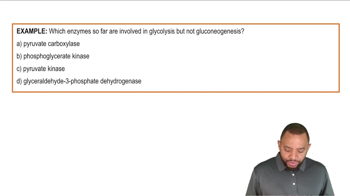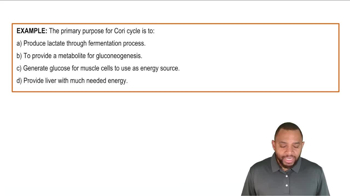Textbook Question
Which cells, liver, muscle, or brain, use the following pathways?
b. Gluconeogenesis
 Verified step by step guidance
Verified step by step guidance Verified video answer for a similar problem:
Verified video answer for a similar problem:



 1:45m
1:45mMaster Intro to Gluconeogenesis Concept 1 with a bite sized video explanation from Jules
Start learning